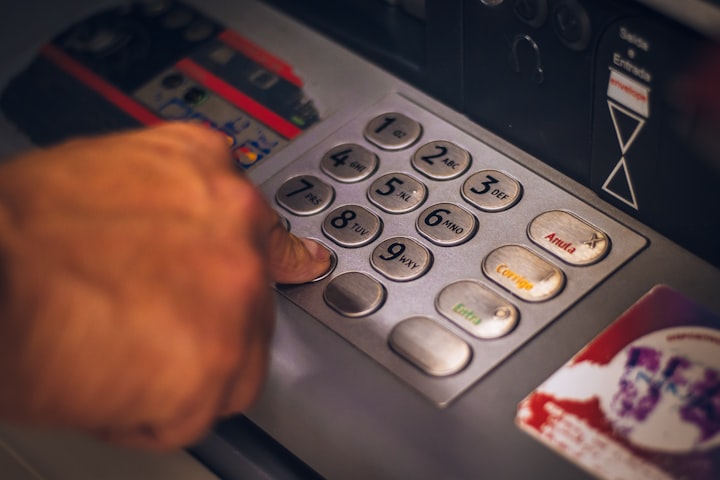
Apple's iPhone is one of the most popular smartphones in the world, and if you own one, you may have had to get it repaired at some point. One part that is frequently damaged is the screen, and when you need to replace it, you’ll have the option of choosing between an LCD or an OLED display. While both are suitable for your device, they have distinct differences in design, image quality, and feature set. In this article, we’ll discuss these differences so you can choose the best screen type for your needs.
What is an LCD screen?
An LCD (Liquid Crystal Display) screen is a panel composed of multiple layers, a backlight, and image pixels. The backlight shines through the plastic layers and provides the lighting necessary to illuminate the screen. The pixels that make up the image consist of two layers of glass, each of which acts as a filter for the light that passes through it. The crystals respond to electrical signals to create an image on the screen.
How does an LCD iPhone screen work?
The iPhone's LCD display works by light shining from behind the panel, passing through the pixel's glass layers, and being filtered to select the correct color and intensity. The crystals react to electrical signals and turn to let light pass or block it, creating the image displayed on the screen.
What are the benefits of using an LCD iPhone screen?
One of the benefits of using an LCD iPhone screen is its lower cost compared to OLED technology. Additionally, the iPhone's LCD display doesn't suffer from burn-in as OLED screens can. LCDs traditionally have a longer lifespan and are more reliable.
What kind of problems can occur with LCD iPhone screens?
While LCD screens are a reliable display option, they can suffer from certain problems. These include dead pixels, backlight bleeding, and limited contrast compared to OLED. Additionally, LCD screens are thicker and heavier, making the phones less sleek in design.
What is an OLED display?
OLED (organic light-emitting diode) displays are composed of multiple layers of organic material, including two conductive plates: one that acts as the anode and another that acts as the cathode. Each pixel is composed of three organic layers, and when the current passes through them, they emit light.
What makes the OLED iPhone display different from LCD?
The OLED display differs from LCD in that the pixels emit light instead of filtering backlight, resulting in better image quality and faster refresh rates. OLED screens have greater contrast and can produce more accurate colors, adding depth to images, and are easier on the phone's battery life.
How does an OLED screen work compared to an LCD screen?
OLED screens work differently than LCD screens; they do not rely on a backlight source but instead generate light from the pixels themselves. This makes it possible to achieve true black because pixels can be turned off, and not emit any light.
What are the benefits of using an OLED iPhone display?
The benefits of using an OLED iPhone display include deeper, richer colors and higher contrast, for a better image experience overall. OLEDs have faster refresh rates, make scrolling and watching videos smoother, and are lighter and thinner than LCDs.
Which iPhone models have LCD screens and which have OLED screens?
Which iPhone models use LCD screens?
The following iPhone models use LCD screens: iPhone (2007), iPhone 3G, iPhone 3GS, iPhone 4, iPhone 4S, iPhone 5, iPhone 5C, iPhone 6, iPhone 6 Plus, iPhone 6S, iPhone 6S Plus, iPhone SE (1st Gen), iPhone 7, iPhone 7 Plus, iPhone 8, iPhone 8 Plus, iPhone XR, iPhone 11, iPhone SE (2nd Gen).
Which iPhone models use OLED screens?
The following iPhones use OLED screens: iPhone X, iPhone XS, iPhone XS Max, iPhone 11 Pro, iPhone 11 Pro Max, iPhone 12, iPhone 12 mini, iPhone 12 Pro, iPhone 12 Pro Max, iPhone 13, iPhone 13 mini, iPhone 13 Pro, iPhone 13 Pro Max.
Is there any difference in touch sensitivity between LCD and OLED screens?
Both LCD and OLED screens offer excellent touch sensitivity. However, some people may perceive a difference in feel due to the slightly different construction of the two displays. The significant difference in touch sensitivity is within the software. Still, the hardware differences between LCD and OLED screens make no discernible impact on touch functionality.
Which screen type should you choose for your iPhone, LCD or OLED?
What factors should you consider in choosing between LCD and OLED screens?
When choosing between the two screen types, it's important to consider factors such as budget, image quality, battery life, compatibility, and repair cost. If the phone's battery life is a priority, then OLED is the better choice. If the display's repairability is important, then an LCD display is better. OLEDs display richer colors and contrast, while LCDs are more visible in bright light.
What are the differences in design between iPhone models with LCD screens and those with OLED screens?
The significant differences in design between iPhone models with LCD screens and those with OLED screens are minimal but apparent. OLED allows for an edge-to-edge display, while LCD requires a larger bezel to accommodate the backlight. This results in a sleeker and more aesthetically pleasing design with OLED for many users.
Is it necessary to save brightness levels when using an OLED iPhone display?
It's not necessary to save brightness levels when using an OLED iPhone display, but it is recommended. The stable image feature of OLED screens ensures that the brightness level won't cause any damage to the phone over time, but it's still best to save battery and avoid bright light when possible.
Conclusion
Whether you choose an OLED or LCD screen, both types have their advantages and are compatible with your device.
In conclusion, choosing between an OLED display and an LCD screen depends on your preferences. OLED offers better image quality, greater contrast, and a more modern look with its edge-to-edge design. However, it is more expensive and less repairable than LCD. On the other hand, LCD screens are less expensive and more easily repaired, but they don’t have the kind of image quality and design as OLED screens. If you’re unsure which one to choose, consult a professional or do some research to make an informed decision.
About the Creator
Rewa Tech
Rewa is a trustworthy cell phone repair parts supplier, focused on providing high-quality replacement parts for Apple iPhone, iPad, Samsung, and Huawei devices.






Comments
There are no comments for this story
Be the first to respond and start the conversation.